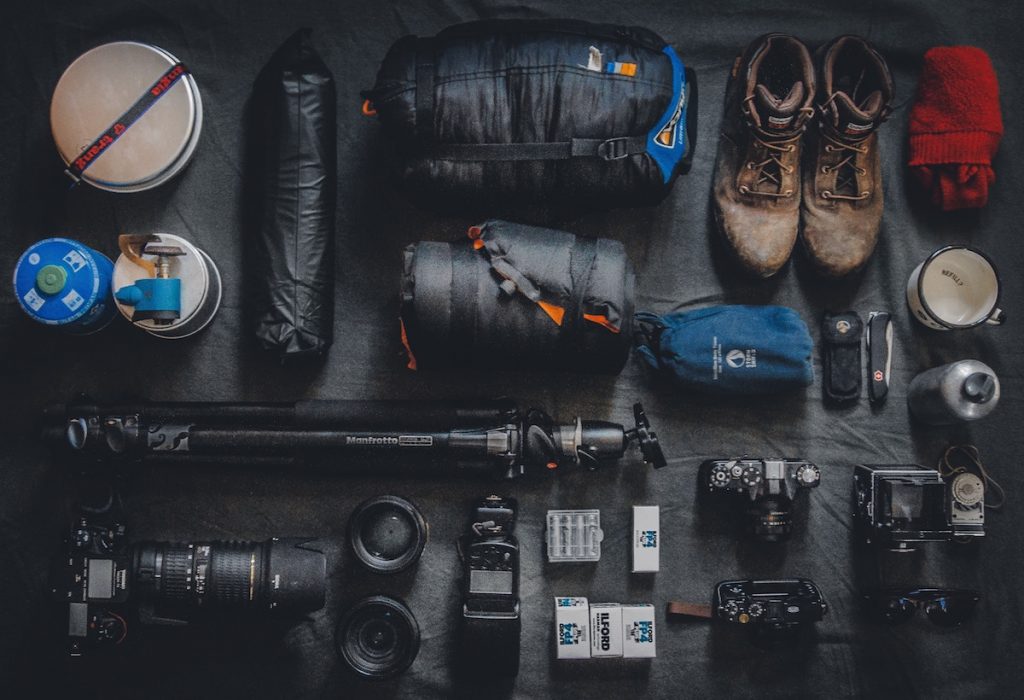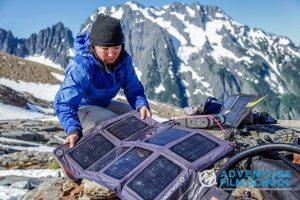
Anyone who’s ever car camped knows what happens whenever you begin packing for a trip – no matter your best intentions, you end up carting along half the house, even if you’re just going to be out for one night. Backpacking, however, is a different story. Whether you’re hiking out five miles or fifteen miles to camp, you’re keenly aware that every pound (or ounce…or gram) matters when hauling gear into the backcountry. It might seem like a daunting task, then, to add a bunch of camera equipment to your load, but with careful planning and critical thinking, it’s absolutely possible to tote along a slimmed down kit that allows you to get the job done right. With that in mind, here are some gear suggestions to help make the most out of your outdoor adventures.
Camera-friendly backpack
On trail, an appropriate backpack is your best friend, providing storage for all of the gear that will not only make the backcountry experience enjoyable, but also keep you safe and comfortable. Therefore, it’s really important to find a pack that works for you, something that will not only fit well on your body, but also hold all of your gear. When shopping for a pack, don’t be afraid to bring a few things along to the store, so you can see whether various models will jive with some of your personal must-haves. Is there a place to attach your tripod? Is the carrying capacity large enough to fit your overnight gear and camera equipment? Does it have a rain cover or the ability to sport one?
While you might find that traditional packs offer more customization options, a larger capacity, and hike-specific support (including a significant waist belt, internal frame, and load lifters on the shoulder straps), it is possible to purchase a camera-specific pack that comes with separate padded storage areas for lenses, camera bodies, and other gear. F-Stop Gear designs packs specifically for adventure photographers and filmmakers, but brands like Lowepro, MindShift, Manfrotto, and Mountainsmith also produce bags geared towards filmmakers and photographers on the go.
Harness or Belt System
Speaking of being on the go, organization is the key to moving fast in the backcountry. It’s important to develop a system that allows you to not only know exactly where your gear is at all times, but also help you access it with ease. For this reason, you might consider carrying a harness, hip pack, or utility belt system, which puts key elements right at your fingertips instead of buried deep in your backpack.
Correct Lenses

Along with organization, minimalism is another technique that will save you time and help reduce stress in the backcountry. If you’re heading out to a beautiful place with an adventurous mission, it’s probably tempting to cart along your entire quiver of lenses to capture every detail you might possibly encounter. However, this adds both weight and complication. Instead, think critically. Look through your existing body of work and consider which lenses (and filters) you use the most and what kind of storytelling you’ll focus on for this project. Coming up with a shot list beforehand will help you winnow down further to figure out the most minimal lens kit that you can carry out into the field.
Stabilization Method
Backcountry travel usually equates to moving along uneven terrain, whether on trail or off, so it’s helpful to bring a camera that features an in-body stabilizer. If this isn’t possible, consider carrying a small, handheld 3-axis gimbal for more stable shots in the field. A tripod is also key, and newer models are extremely portable. While you can find any number of lightweight options on the market, there’s no denying the usefulness of JOBY’s GorillaPod series; the ultra-flexible legs adapt to any outdoor surface, wrapping around tree branches and gripping rocks to offer extreme versatility. Ultralight enthusiasts might also consider something like the Trailpix series, which features a palm-sized clamp system that creates an on-the-go tripod by utilizing a collapsible rod along with two trekking poles. Of course, the ultimate low-cost option is using existing items from your pack – puffy jackets, sleeping pads, extra clothes – to increase stability for static shots.
Portable Power
You’ll be hard-pressed to find an electrical outlet sprouting from a tree in the backcountry, but that doesn’t mean you can’t keep your electronics charged throughout your trip. If you’ll be in a relatively sunny location with plenty of open sky, there are any number of solar power systems that will keep you juiced. GoalZero is probably the most well-known brand in this market, offering an impressive arsenal of products, from personal solar panels to massive battery kits. Along that line, portable batteries and chargers are crucial to keeping your electronics juiced while out in the field. There are plenty of options here, but Anker is fairly well loved by the backpacking crowd for their durable, high output products.
Media Storage
As with any backpacking trip, it’s important to carry along everything you might need, since the conveniences of civilization are probably at least a few hours – if not days – away. Since you can’t just run out and buy a few extra media cards if you run out on your trip, you’ll want to pack more than you need. Along with that, consider a method of backing up your files, preferably on two different drives, and split those up between two crew members’ packs. If you’re not concerned with minimalism, you might even want to bring along a lightweight computer, like a MacBook Air, to download the day’s work every evening at camp.
